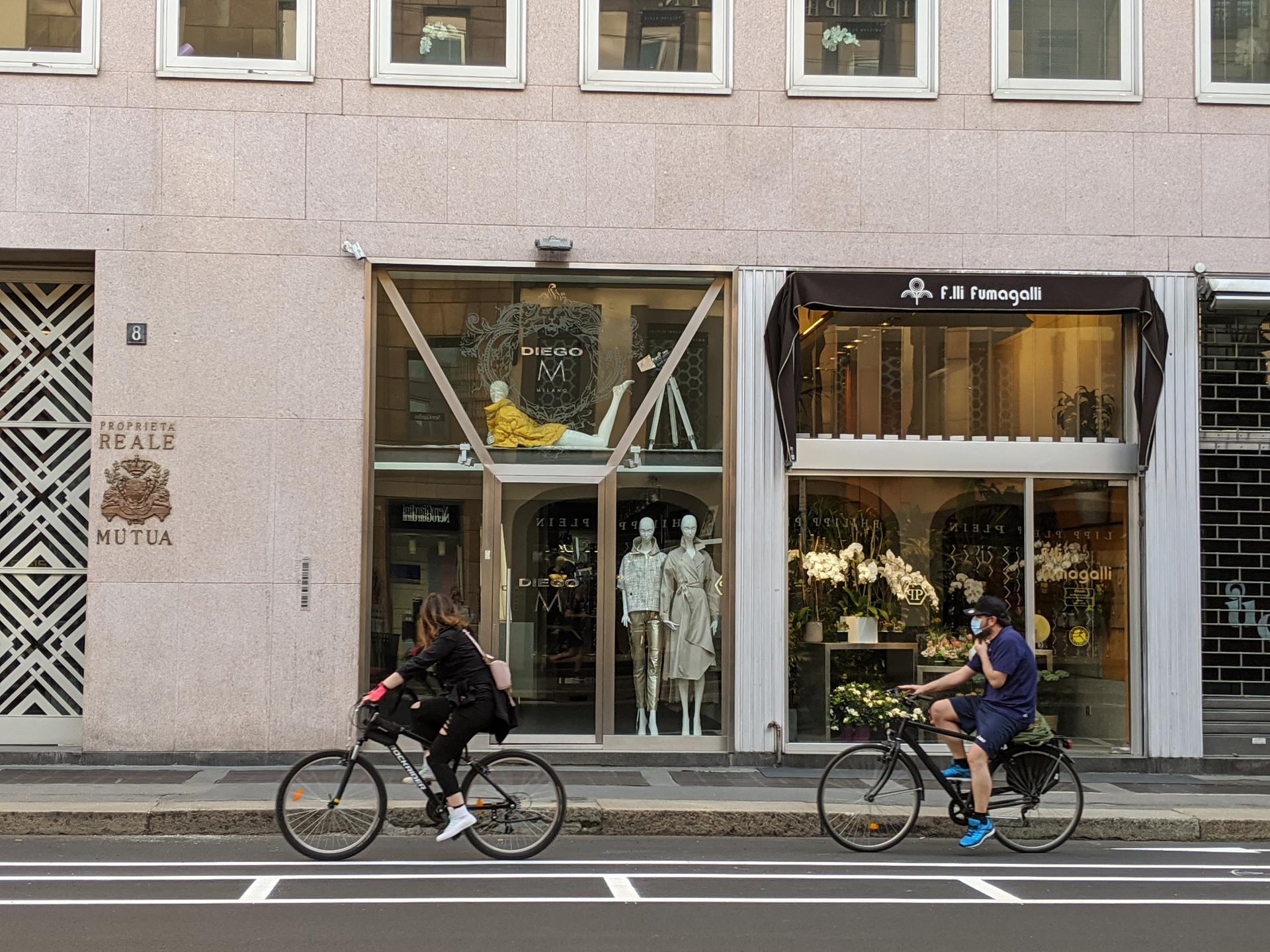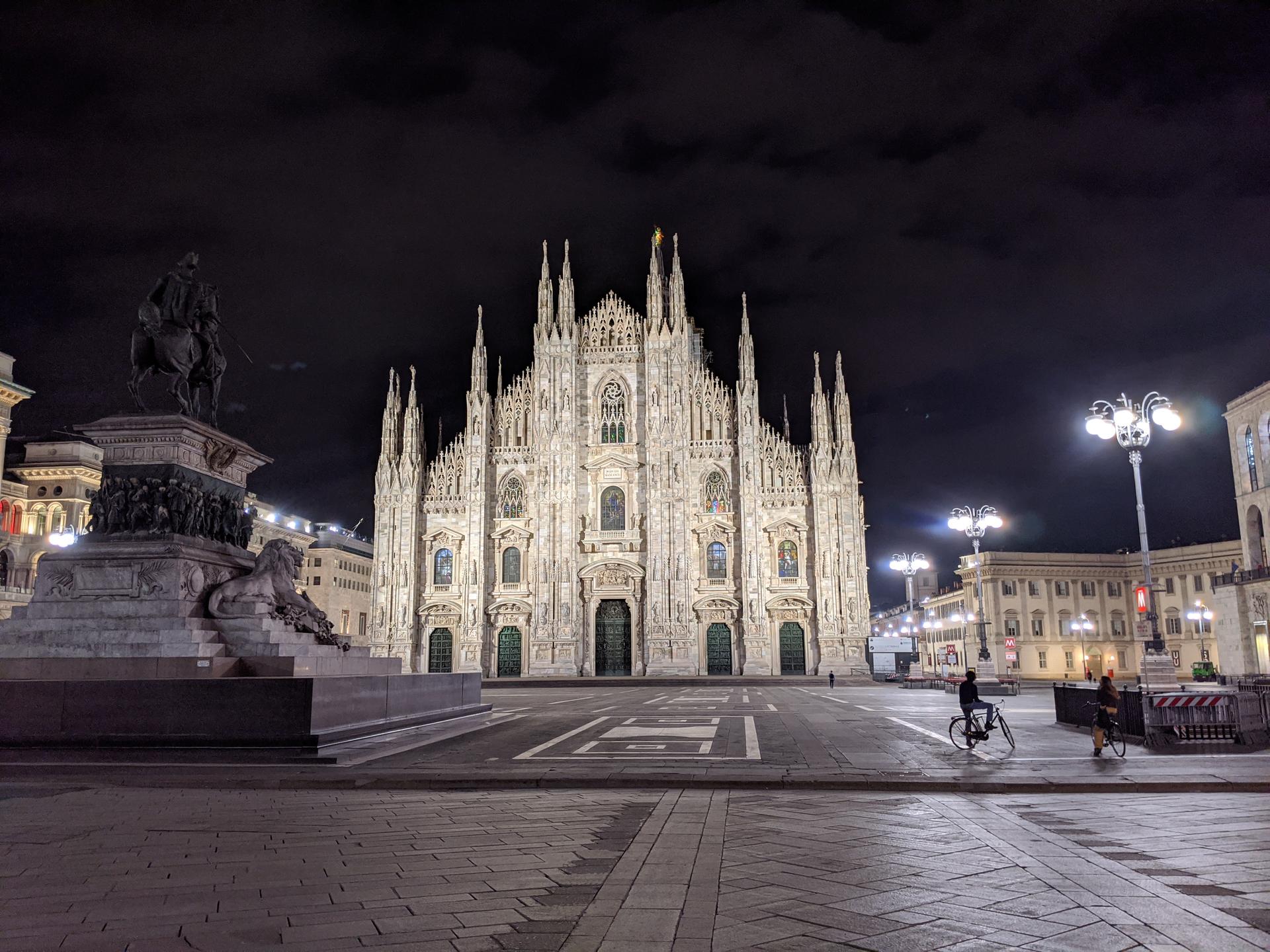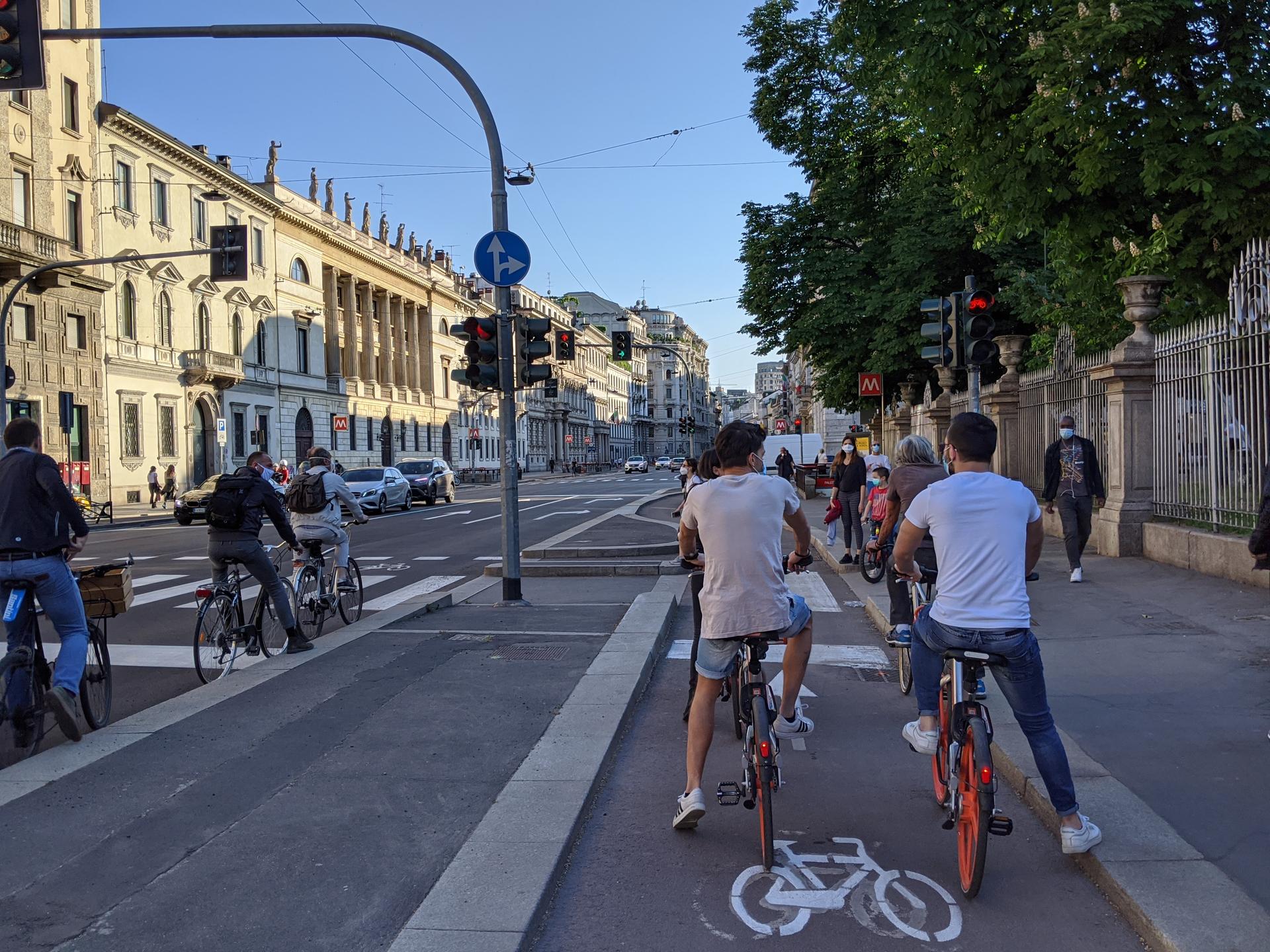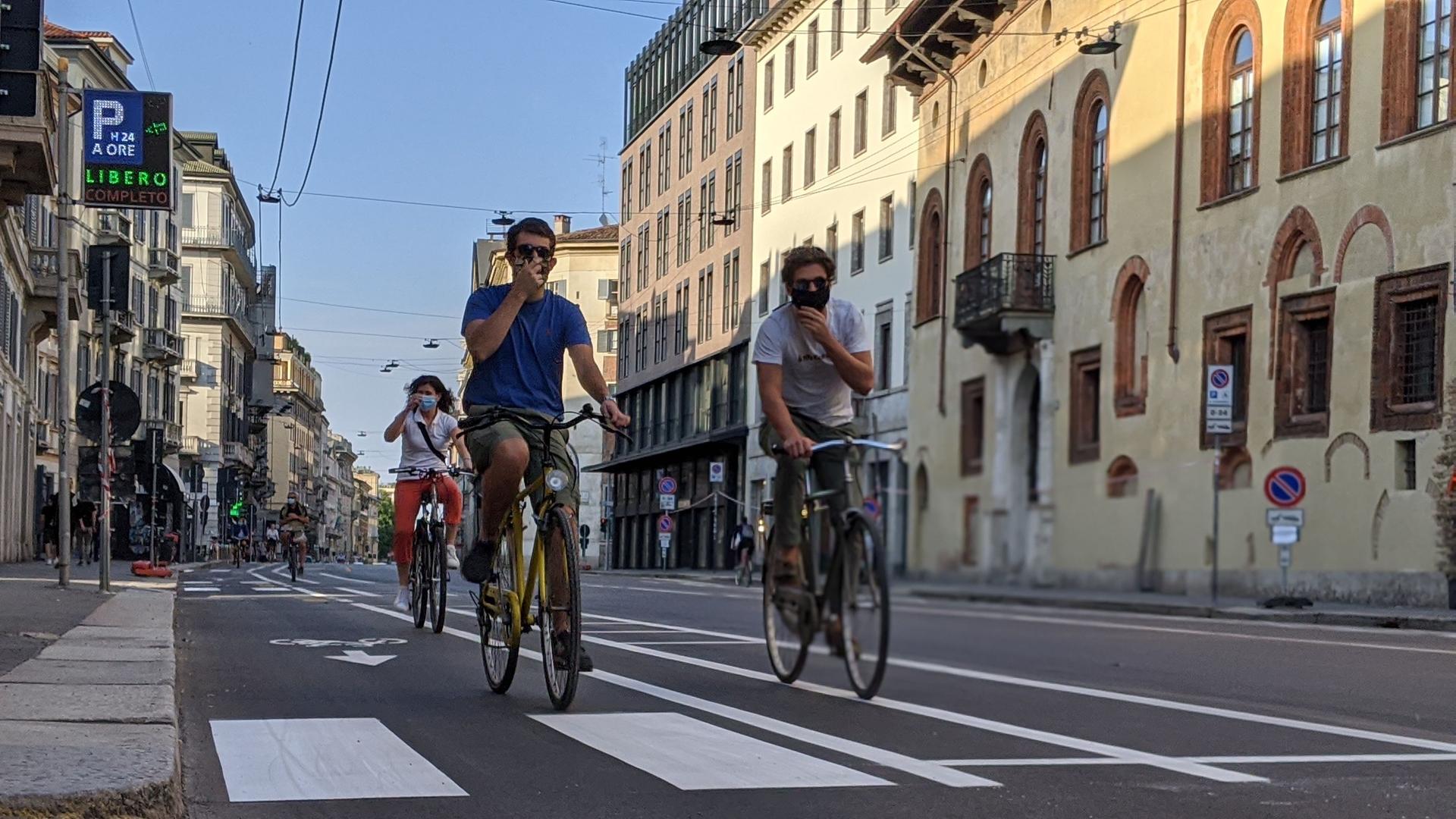After lockdown, Milan rolls out plan to open more streets to cyclists and pedestrians
Pinar Pinzuti describes herself as a professional “cycling brainwasher.”
Her Milan company, Bikenomist, advocates for more bike lanes in her community. Pinzuti said that recently, there’s been an increase in public acceptance of bike lanes, particularly for commuters and families.
“More and more people accept the bicycle as a means of transportation, finally.”
“More and more people accept the bicycle as a means of transportation, finally,” Pinzuti said.
Related: Venice battles climate change and lack of tourism
She appreciates that her city is making more room for cyclists, and she hopes more people will soon take advantage of the changes. The impact on just one major thoroughfare, Corso Buenos Aires, she says, is already evident.
“The street that I once avoided visiting became my favorite destination to observe the transformation,” Pinzuti said, speaking about Milan’s decision to rapidly and dramatically change miles of urban street design.
Corso Buenos Aires now has two new bike lanes that extend along five miles of one of the city’s most prominent shopping streets. Corso Buenos Aires is Milan’s first street to be transformed as part of a citywide plan to convert 22 miles of roads this summer into bike paths and pedestrian areas.
The Strade Aperte plan, translated as “Open Roads,” is one of the world’s most dramatic examples of how city planners around the world, after COVID-19 lockdowns, are redesigning city streets to be friendlier to pedestrians and cyclists.
“The idea is to accelerate projects the city [started] before,” said Pierfrancesco Maran, the deputy mayor for urban planning, green areas and agriculture for the city. “It’s 10 years we’ve been working to reduce pollution, to reduce congestion, to move in a better way.”
Now, as lockdowns slowly lift in many cities around the world, cars are coming back on the roads, which will provide a test for Milan’s redesigned streets.
Related: The changing face of Venice
“There is a very long queue of traffic. I think this is longer than it used to be before quarantine. Many people are using their private cars to move in the city center.”
“There is a very long queue of traffic. I think this is longer than it used to be before quarantine,” said Fabio Moliterni, a Milan resident. “Many people are using their private cars to move in the city center.”
Maran said although many drivers in Milan may oppose the new bike lanes, he believes the redesign strikes a balance between their needs and a more walkable city for residents.
“People who use cars say that it was better before,” Maran said. “We have to listen to everybody, even the people that complain. Our idea is that cities are not just made for cars. We have to find space for everybody.”
At the height of Italy’s lockdowns, car traffic dropped by up to 75%, which contributed to major drops in the country’s air pollution. Maran said the city has a goal to reduce the amount of air pollution that comes back as cars reenter the roads. High air pollution is associated with high rates of mortality of COVID-19, and northern Italy historically has some of the worst air quality in Europe.

On top of new bike lanes, the Strade Aperte plan includes new and widened sidewalks, more stringent speed limits for cars and the opening of pedestrian- and bike-priority streets.
Milan has one of the most ambitious plans, according to a global overview put out by the National Association of City Transportation Officials. But other cities — Paris, Auckland, New Zealand, London, Mexico City and Bogotá, Colombia — have had similar changes, creating emergency bike lanes and extra pedestrian areas amid lockdowns.
Related: Robot nurse helps Italian doctors care for COVID-19 patients
Milan has the ability to lead the world in urban street design, said Janette Sadik-Khan, a former transportation commissioner for New York City, who now works with Bloomberg Associates and chairs NACTO. Sadik-Khan has spent the last two years working with Milan on plans to transform their public spaces. She said the pandemic sped up a process that was already in motion.
“Milan is giving the world a master class in seizing this difficult moment. We don’t just want cities to return back to normal, we want cities to come back more resilient, more equitable and economically connected.”
“Milan is giving the world a master class in seizing this difficult moment,” Sadik-Khan said in an email. “We don’t just want cities to return back to normal, we want cities to come back more resilient, more equitable and economically connected.”
More than half of Milan residents took public transit to work before the pandemic. And as the systems start to reopen, the capacity of buses, trams and subways will be largely diminished, down to less than a third of what was available before.

Part of the reasoning behind Strade Aperte is to encourage residents to avoid choosing cars — by offering a pleasant alternative. The planned bike lanes follow subway lines, to create an alternative for people who used to rely on public transit for their daily commutes.
“[Commuters] can have the same itinerary every day, but do it by bike instead of by subway as before,” Maran said.
Related: Living under lockdown in the Eternal City
Sofia Carra, a 19-year-old high school student who lives in Milan, said she was heartened to see the bike lanes lining Corso Buenos Aires, but she’s worried as she sees the cars coming back to the streets.
“The fact that the government decided to create this new bike path shows how they are starting to care more about the climate change issue. But I think it would be just a drop in the ocean. I think we could easily go back to how Milan was before the lockdown.”
“The fact that the government decided to create this new bike path shows how they are starting to care more about the climate change issue. But I think it would be just a drop in the ocean,” Carra said. “I think we could easily go back to how Milan was before the lockdown.”

But Sadik-Khan argues that transforming city streets is a step toward system change in cities, with lasting improvements for both people and the environment.
“The cities that take this moment to reset their streets and make it easier for people to walk, bike and take public transport will be positioned to prosper after this pandemic and not simply recover,” she said.
Maran posted a video on Twitter in May, riding along Corso Buenos Aires’ new bike lane.
“It’s incredible. We go into politics because we want to change our city,” Maran said. “The idea that after a pandemic, we try to have a better city … that’s something that is fantastic, and to ride on something you created, it’s emotional.”
